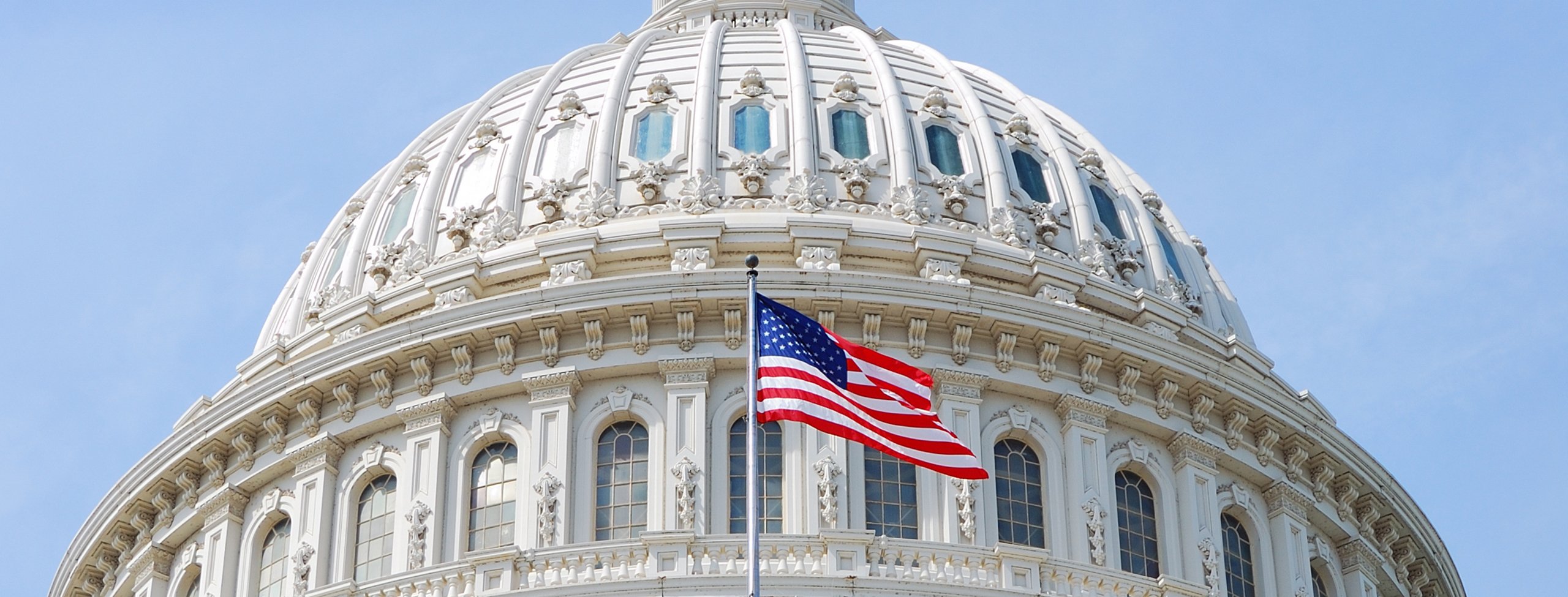
11 September 2023 • 9 minute read
Biden Executive Order bars investments in sensitive technology in China: key implications for institutional investors
President Joe Biden has signed an Executive Order (EO) to bar investments in sensitive technology in China with the goal of preventing American capital from contributing to advanced industries and applications that could support China’s military modernization and threaten US national security. This note raises a few of the EO’s key implications for institutional investors and encourages those potentially impacted to consider whether to submit comments or coordinate with industry groups to influence the final rules. Given the sensitive nature of the subject matter, institutional investors interested in commenting should work with counsel to ensure that their comments are properly and effectively formulated to the relevant US government departments and agencies.
The long-anticipated EO includes prohibitions on private equity and venture capital firms, as well as joint ventures, from making investments in certain priority tech sectors and new notice requirements regarding similar investment activities. The impact that the final rules will have on institutional investors that indirectly invest in China through alternative asset vehicles is unclear and currently under consideration by the Treasury Department.
In conjunction with the EO, the Treasury Department concurrently issued an Advance Notice of Proposed Rulemaking (ANPRM) seeking public comment on its implementation of the EO, with a 45-day public comment period, which ends on September 28, 2023.
Potential impact on institutional investors
As institutional investors begin to consider the impact of the proposed rulemaking, below is a non-exhaustive list of high-level considerations for institutional investors with respect to their commitments to venture capital funds, private equity funds, funds of funds and other pooled investment funds.
- The Treasury Department is considering excluding from the restrictions and notice requirements investments where a “limited partner’s contribution is solely capital into a limited partnership structure and the limited partner cannot make managerial decisions, is not responsible for any debts beyond its investment, and does not have the ability (formally or informally) to influence or participate in the fund’s or a covered foreign person’s decision making or operations” and “the investment is below a de minimis threshold to be determined by the Secretary.”
- It is unclear whether limited partner voting rights or the ability to appoint a representative to an advisory committee might constitute “managerial decisions.”For example, will governance rights (eg, removal of the general partner or early termination of the fund) or the ability to waive investment restrictions included in a fund’s organizational documents be sufficient to constitute “influence” or the right to “participate in the fund’s… decision making or operations” if the general partner retains ultimate investment-making authority? Institutional investors should consider commenting that such standard rights should not disqualify an investor from relying on an exception for passive limited partner investments. Perhaps a similar standard as the investment fund carve-out in the regulations governing the Committee on Foreign Investment in the United States (CFIUS) would be appropriate. The CFIUS regulations provide that a foreign limited partner’s participation on an advisory committee of a fund does not necessarily subject the fund’s investments to CFIUS review if the advisory committee’s rights are limited in certain ways (eg, the advisory committee may not have the ability to approve, disapprove or control the investment decisions of the fund).
- Similarly, it is uncertain what will be considered a “de minimis” investment. Will it be based on a flat dollar amount or a percentage of interests in the fund? If based upon a percentage of interests, when will the threshold be determined (ie, at the time the investment is made, as of the fund’s final closing or at any given time during the life of the fund)? How will the threshold apply to funds of one or other bespoke investment vehicles? Is there any impact if the institutional investor has no investment-making or investment-blocking authority or advance notice before a prohibited investment is made? Are limited partners able to opt out of potentially problematic investments and avoid the prohibitions or notice requirements?
- It is unclear whether limited partner voting rights or the ability to appoint a representative to an advisory committee might constitute “managerial decisions.”For example, will governance rights (eg, removal of the general partner or early termination of the fund) or the ability to waive investment restrictions included in a fund’s organizational documents be sufficient to constitute “influence” or the right to “participate in the fund’s… decision making or operations” if the general partner retains ultimate investment-making authority? Institutional investors should consider commenting that such standard rights should not disqualify an investor from relying on an exception for passive limited partner investments. Perhaps a similar standard as the investment fund carve-out in the regulations governing the Committee on Foreign Investment in the United States (CFIUS) would be appropriate. The CFIUS regulations provide that a foreign limited partner’s participation on an advisory committee of a fund does not necessarily subject the fund’s investments to CFIUS review if the advisory committee’s rights are limited in certain ways (eg, the advisory committee may not have the ability to approve, disapprove or control the investment decisions of the fund).
- Treasury’s contemplated exception for funds considers whether the investor is responsible for any debts beyond its investment. Presumably the intention is to draw a distinction between limited partner and general partner interests, however, most funds require investors to maintain responsibility for certain expenses and liabilities and co-investment funds routinely charge expenses on top of commitments. It would be helpful if Treasury further refined this concept to refer more narrowly to the general debts and obligations of the fund.
- The Treasury Department currently intends these rules to be “forward-looking, and not to cover transactions and the fulfillment of uncalled, binding capital commitments with cancellation consequences made prior to the issuance” of the EO. Investors may want to seek clarification on the intent of the term “cancellation consequences,” and provide comment to the Treasury Department on how it should be defined (eg, standard default consequences).It also remains unclear how the rules will apply if an investor is required to hold a prohibited investment directly following a compulsory distribution in kind after the EO was issued.
- Another apparent uncertainty is the level of knowledge that will be required by a US person to implicate the prohibition or reporting requirement. The Treasury Department is considering adopting a knowledge standard that would mean that to be covered by the regulations, “a U.S. person would need to know, or reasonably should know based on publicly available information and other information available through a reasonable and appropriate amount of due diligence, that it is undertaking a transaction involving a covered foreign person and that the transaction is a covered transaction.” Will an institutional investor be considered to have constructive knowledge of any qualifying investments if such investor only receives customary fund-level quarterly and annual reporting? Will this be subject to a strict liability standard? Investors will need clarity regarding what informational rights are needed to determine whether a proposed fund-level transaction is prohibited or carries a reporting obligation.
Investors should consider whether to comment to the Treasury Department to ensure that the new rules are practical and reflect the realities of fund formation, fundraising, and investment approval and decision-making processes. As noted above, however, investors interested in commenting should work with counsel to carefully craft comments.
Broader context
It is important to view this EO in the broader context of the Biden Administration’s strategic recoupling with China, which the President articulated in his March 25, 2021 policy address on China. We outline key policy prescriptions outlined by the Administration:
- The President indicated he is not looking for confrontation with China and recognizes that while it is not a democratic state, there is room to work with China.
- The President views US-China relations in the context of great power competition, and the US will increase investment in artificial intelligence, biotechnology, quantum computing, and medical research. At the same time, US Treasury Secretary Janet Yellen has publicly commented that she is worried about “complete technological decoupling” from China.
- The Biden Administration has emphasized the desire to act in conjunction with its allies and Secretary Yellin has noted many EU allies are reluctant to completely decouple from China. The US will work with The Quadrilateral Security Dialogue (also known as the Quad) between the United States, Japan, Australia, and India to respond to China.
Accordingly, the several points of the EO and ANPRM that we outline above should be viewed as narrow and limited prohibitions focusing only on the most sensitive technologies that will impact critical US national security interests.[1] There remain vast and profitable investment opportunities in China that can be responsibility pursued with proper strategic advice, compliance frameworks, and government engagement.
To avoid any misinterpretation that the EO is a move away from economic recoupling with China, shortly after the EO was published the US and China agreed to set up new channels of communication for economic and commercial issues. Commerce Secretary Gina Raimondo announced a new bilateral forum to discuss export control measures to reduce misunderstanding of national security policies and stated, “We are trying to make the case that the vast majority of our trade has nothing to do with national security.” Institutional investors and fund managers exploring increased business with China should do more than establish robust compliance frameworks. A sophisticated approach will include regular engagements with the US State and Treasury Departments to (i) signal sensitivity to US policy and gain guidance and insight to risks; (ii) determine where increased China exposure can help US industry; and (iii) inform US policy makers of private sector views that will be beneficial to US diplomatic engagement with China.
For further information on the scope of the EO and ANPRM, please see our earlier alert, available here. Our National Security and Global Trade group and Investment Funds group would be glad to assist in preparing comments or discussing potential impacts of this rulemaking.
[1] The EO covers “sensitive technologies and products in the semiconductors and microelectronics, quantum information technologies, and artificial intelligence sectors that are critical for the military, intelligence, surveillance, or cyber-enabled capabilities” of China (to include Hong Kong and Macau).

